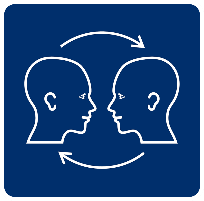A Multidisciplinary Approach to AAC for Children and Youth with Acquired Brain Injury
Session
1.05
Practice Report
- Elizabeth Yerbury (The Children’s Trust)
- Aisling Ryan (The Children’s Trust)
Summary
This paper describes how a multidisciplinary approach assisted a young child following a severe brain injury to successfully develop the skills required to access a range of AAC approaches.
Method/Activities/Techniques
This was a single case study design. It involved a retrospective review of rapidly changing AAC intervention for a child accessing a residential rehabilitation service. A series of outcome measures were administered on admission and discharge to determine the impact of the intervention on daily function.
Results/Findings
All outcome measures used indicated positive change, particularly within social function and wellbeing. AAC intervention had to be responsive to change in access methods, as well as communication competence, so therefore multidisciplinary working was essential. AAC advanced from low-tech choice making (eye gaze) to high-tech device (touch screen with finger point).
Conclusions
In this case, AAC intervention significantly impacted on development of communication, social function and motor skills. This led to increased independence and access to an appropriate education setting.
The first year of recovery following an ABI should be seen as a window of opportunity for change, with the ability to learn new skills such as AAC. A responsive, multidisciplinary approach is essential for achieving success. Accessible outcome measures indicated change and should be encouraged in community services.
Level of Session
General
Age Group
Child
Interest
Primary school
Secondary school
Special school
Further/Higher Ed.





